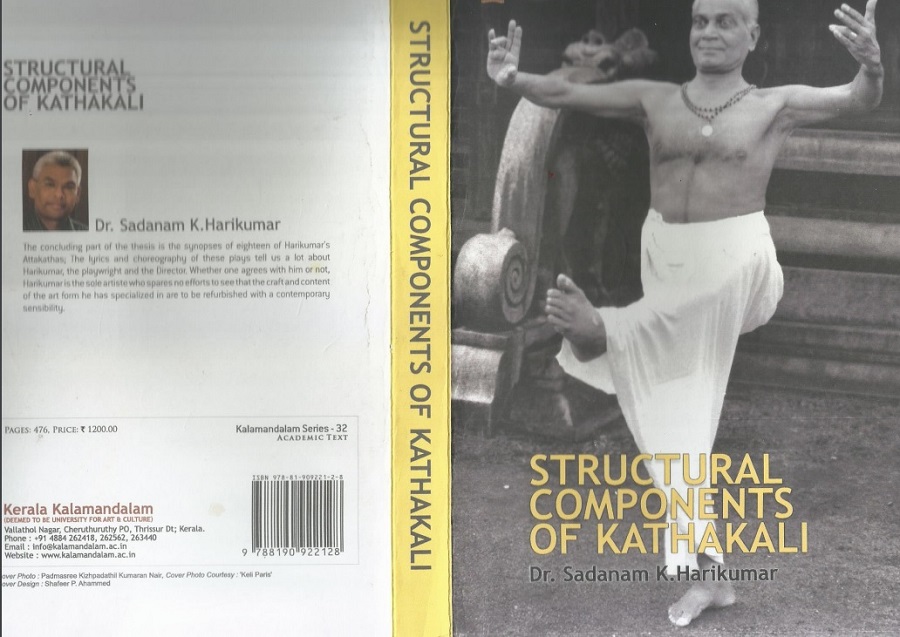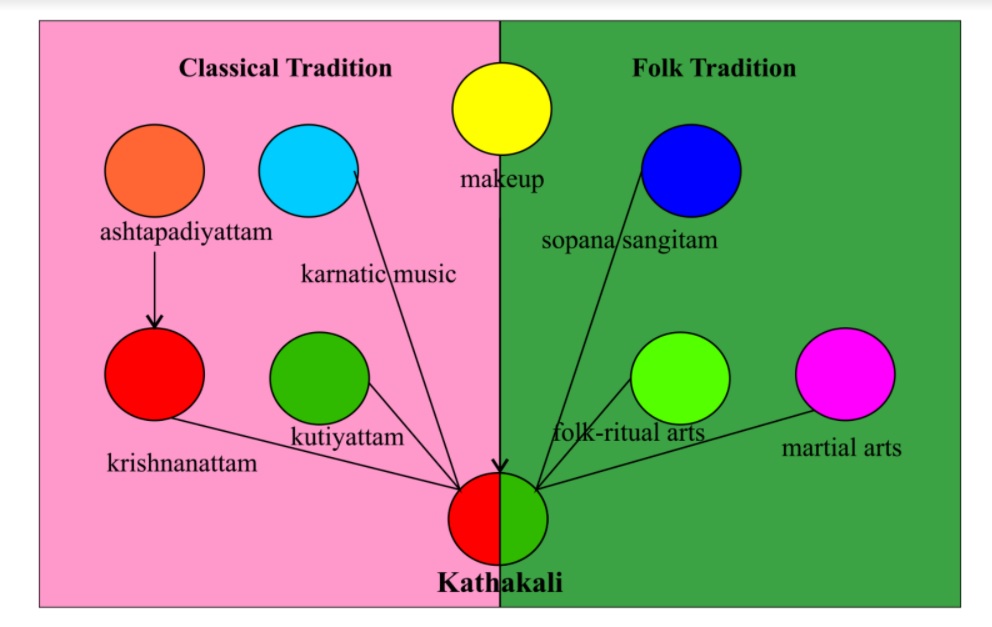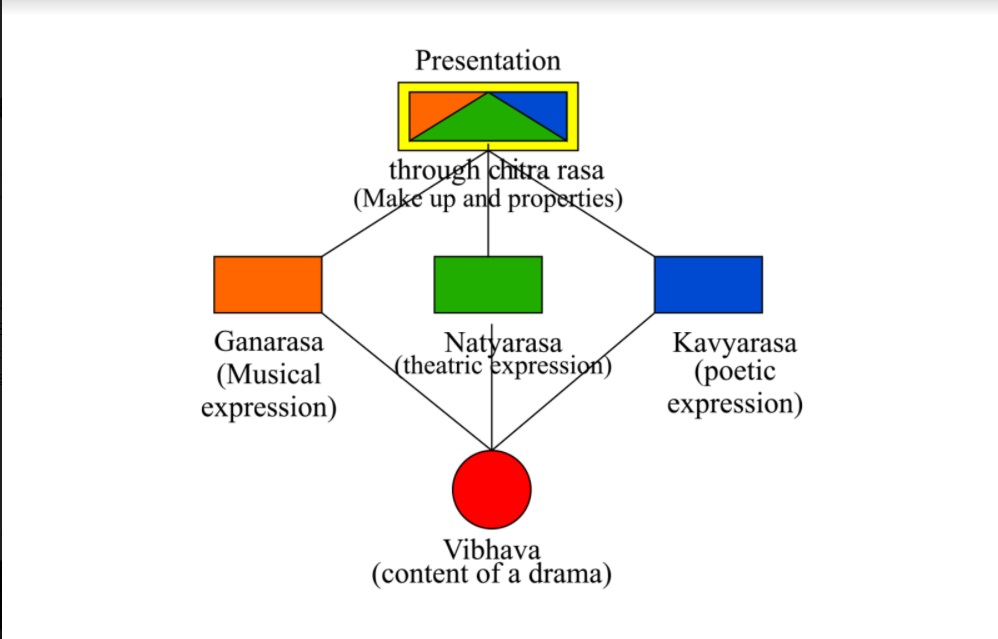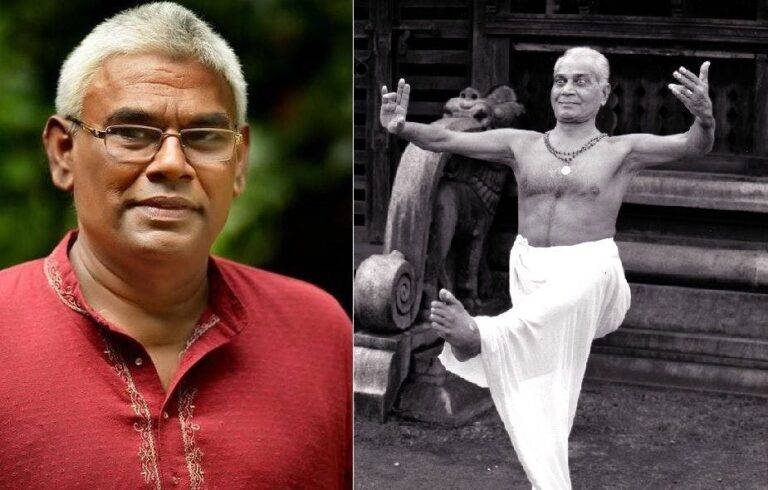Dr. Sadanam K Harikumar’s book Structural components of Kathakali belongs to a class of its own for its holistic analysis of the dance-drama in a manner hitherto not attempted by any critic or writer.
‘Structural components of Kathakali’ authoured by Dr Sadanam K Harikumar is the latest among the
books on Kathakali which are more than a dozen. Published by Kerala Kalamandalam Deemed to be University for Art and Culture, it is also Harikumar’s research thesis that fetched him a doctorate from the Calicut University in 2010. It is for the first time that the Kalamandalam is publishing a thesis as a book.
Harikumar has schematically presented his observations in the book in three parts, each divided into several chapters. The sequence of a play is provided in the beginning which serves as an introduction to Kathakali.

Part1: Morphological structure of Kathakali
This is discussed in the three chapters, of which the first two elaborate the didymous nature of society, literature, music, theatre, musical instruments, etc. Interestingly, these have been pictorially illustrated for easy comprehension. The author analyses the caste-ridden society of yore, threadbare and finds sambandham (an alliance of Brahmin man with a lower caste woman) as a blessing since “it brought about the fusion of two different cultural ethos”. According to the author, this fusion naturally brought changes in language, customs, art, theatre, music and many other social and cultural institutions, and has immensely influenced the moulding of Kathakali. The discussion of the dual nature of language is replete with examples from different plays.

Chapter 2 is an exhaustive study of the folk and ritual art forms of Kerala. How far Kathakali has drawn deep from them for its theatrical side is revealed here. The author successfully elaborates on each element, citing examples from select plays. He observes how the ragas of Carnatic music have been influenced by indigenous music and folk performances and were adapted to suit theatrical requirements, giving birth to a novel stream of music – Kathakali Sangeetham. Even in the accompanying instrumental music, the division can be discerned – while Maddalam and Chengila are considered as Devavadyams, Chenda and Ilathalam are reckoned as Asuravadyams. The pictorial representation of Kathakali towards the end of this chapter, assimilating the classical and folk traditions which he terms as Brahmanic and non-Brahmanic respectively, epitomises the observations. The Sanskrit tradition of Kathakali is explored by expatiating on Koodiyattam, Krishnanattam and Ramanattam in order in Chapter 3.
Part II: Inner structure of Kathakali
This part is perhaps the essence of the book as the structure of each component of Kathakali is analysed in six chapters. Beginning with the very stance of the artiste which serves as a foundation on which the whole body is supported, the author dwells on the technique of transmission of energy in the body while stomping on the floor, based on Newton’s third law. The metaphysical explanations of the seven chakras that are the centres of energy may not be intelligible to a layman. In this context, he has mentioned the technique of Swaravayu that was practised by the veteran Pattikkamthodi Ravunni Menon. But the author could have mentioned Bhagavathar Kunjunni Thampuran, the scholar-thespian of Kodungallur Palace, under whom Ravunni Menon was trained in this ingenious technique.

The synthesis of Nritta, Nrithya and Natya in Kathakali is discussed in Chapter 2. Quoting extensively from aesthetes right from Bharatha, Harikumar asserts that this triad receives an entirely different dimension in Kathakali, where nritta is one-dimensional, nrithya two-dimensional and natya, three-dimensional. All these have been skillfully illustrated. The author’s musical expertise is revealed as he extends this to Sopana Sangeetham, Vadya Sangeetham and even to painting.
Rasa, Abhinaya and the Swaras
The lengthiest chapter in the book is the one on Rasa. The treatment is sweeping. Starting from the concept of Vibhava, Anubhava and Vyabhicharibhavas leading to Rasa, Harikumar arrives at the structure of different Rasas in Kathakali – Natyarasa, Kavyarasa, Ganarasa and Chitrarasa. He proves that in Kathakali, Natyarasa is intertwined with the other rasas that are conveyed to the audience by the vocalists and performers.
The fourth chapter, on Abhinaya, is equally in-depth. Besides the gestures in Hasthalakshanadeepika that are commonly used in Kathakali, those not found in this treatise and their applications have also been explained, again with illustrations. The Aahaarya of each character, both major and minor, has been described with subtleties and is so informative that it can serve as a reference to connoisseurs.

Chapter 5 talks about the structure of music, starting from the very definition of the raga, those commonly used in Kathakali and the emotions evoked by them. The way in which the ragas have been employed in different plays in relation to the various characters is also elaborated. The chapter includes a picture of the keys of the harmonium, which serves as an effective tool in identifying the swaras involved in each raga and also their arohana and avarohana.
The author has taken great pains to explain the Talas (Chapter 6) used in Kathakali, for various feats and also in relation to the characters. The numerous sketches are a testimony to the mastery of Harikumar over rhythm and his ability to convey intricate details.
Part III: Innovations & experimentations
A playwright with a difference, Harikumar’s 18 plays find a space in the third and concluding part. The innovations he has brought about through experimentations in the different departments of the dance drama are truly commendable. Expectedly, most of his plays have won rave reviews from critics and unorthodox connoisseurs.
The book is replete with quotes from scholars and aesthetes and they substantiate the author’s arguments in no small measure. The observations are so comprehensive that each chapter can assume the status of a separate book.
The quotes from Vishnu Dharmottara Puranam remind one of the dialogue between the sage
Markandeya and king Vajra which reveals the inter-relations among the arts of sculpting, painting, dance, instrumental music and finally vocal music. And commendably Harikumar has proved his
virtuosity in each of them.
The cover photo of the maestro Keezhpadam Kumaran Nair is striking. The colour plates given in the
last pages are a vignette to the diversity of art forms esoteric to Kerala. However, owing to a lack of proper editing, a few errors have crept in. For example, the life period of Swati Thirunal is given as 1833-1867, instead of 1813-1846, while the page number of ‘Abbreviations and Symbols’ is misleading.
The book is truly an asset for senior students of Kathakali, researchers and seasoned rasikas. Kalamandalam deserves encomiums for publishing this treasure trove of knowledge about Kathakali and by doing so, stays true to its mission – the preservation of the art form.
Published by: Kerala Kalamandalam Deemed to be University for Arts and Culture
Number of pages: 476
Price: Rs 1200





1 Comment
In which year
this book is publish